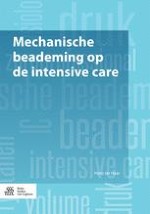Samenvatting
Een zo kort mogelijke beademingsduur is een van de hoofddoelen van mechanische beademing. Bij de meeste patiënten zal dit doel eenvoudig bereikt kunnen worden nadat de primaire oorzaak voor het starten van mechanische beademing voldoende is afgenomen en er geen andere factoren zijn die stoppen van mechanische beademing in de weg staan. Bij een minderheid van de patiënten wordt dit doel pas bereikt na een meer langdurig ontwenningsproces omdat de primaire oorzaak voor het starten van mechanische beademing niet voldoende is afgenomen of omdat er andere factoren zijn die het stoppen van mechanische beademing in de weg staan. Deze categorie patiënten verblijft vaak lang op de intensive care, doet een groot beroep op materialen en middelen en vraagt een grote inzet van het behandelend team. Het te voeren beleid bij deze patiënten dient gestructureerd te zijn en behalve gericht op de specifieke pathofysiologie, ook op het optimaliseren van de randvoorwaarden voor het ontwennen.
